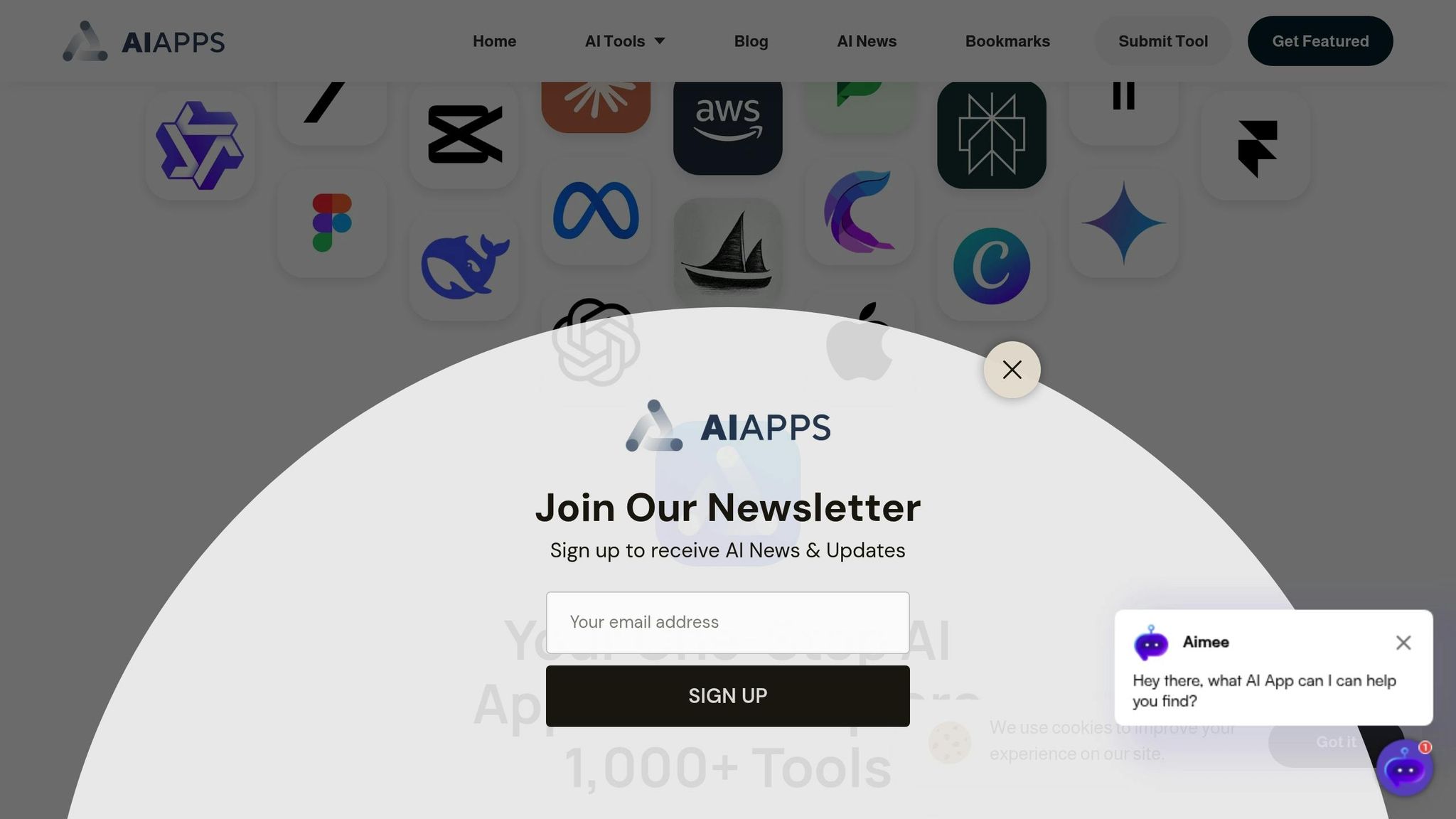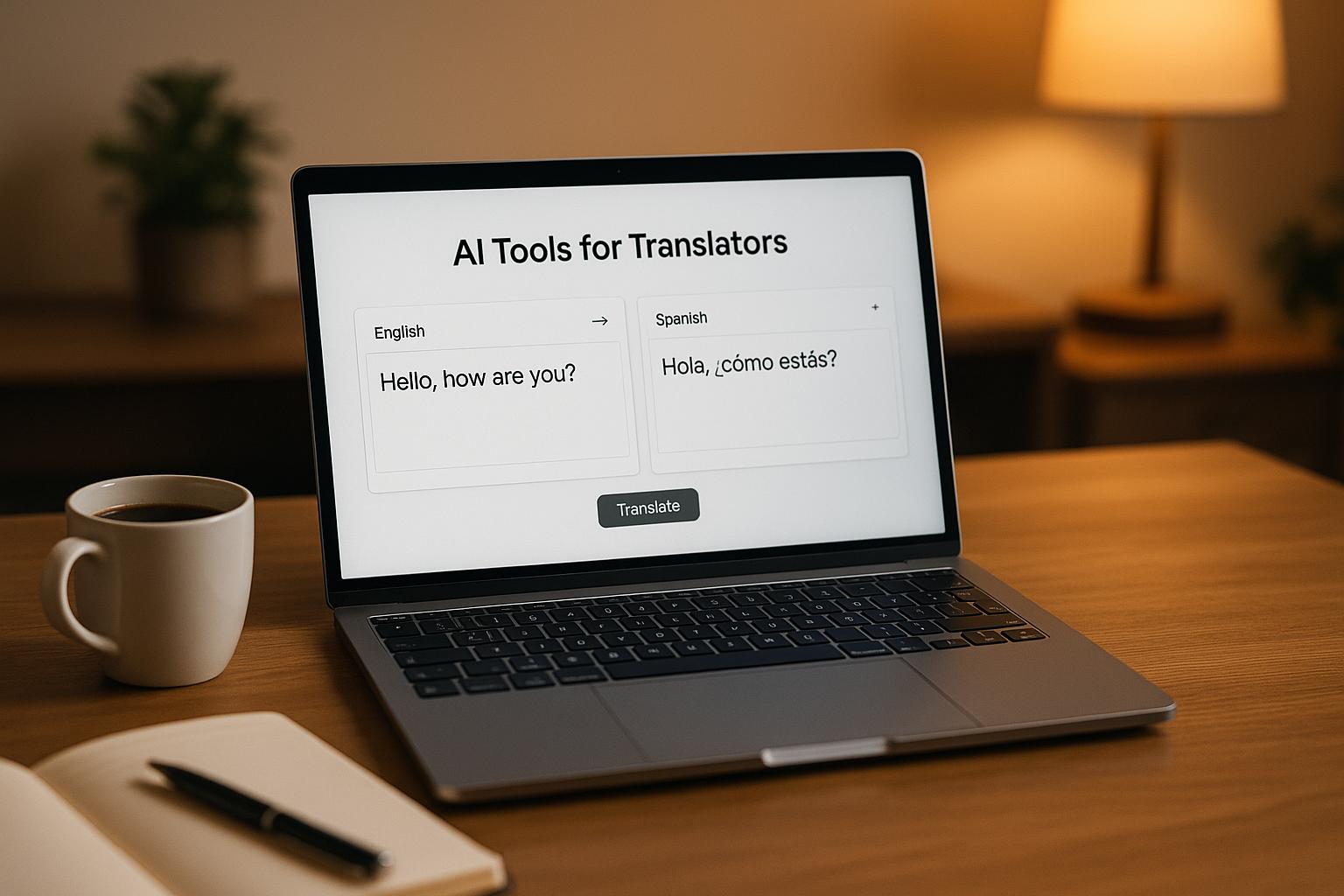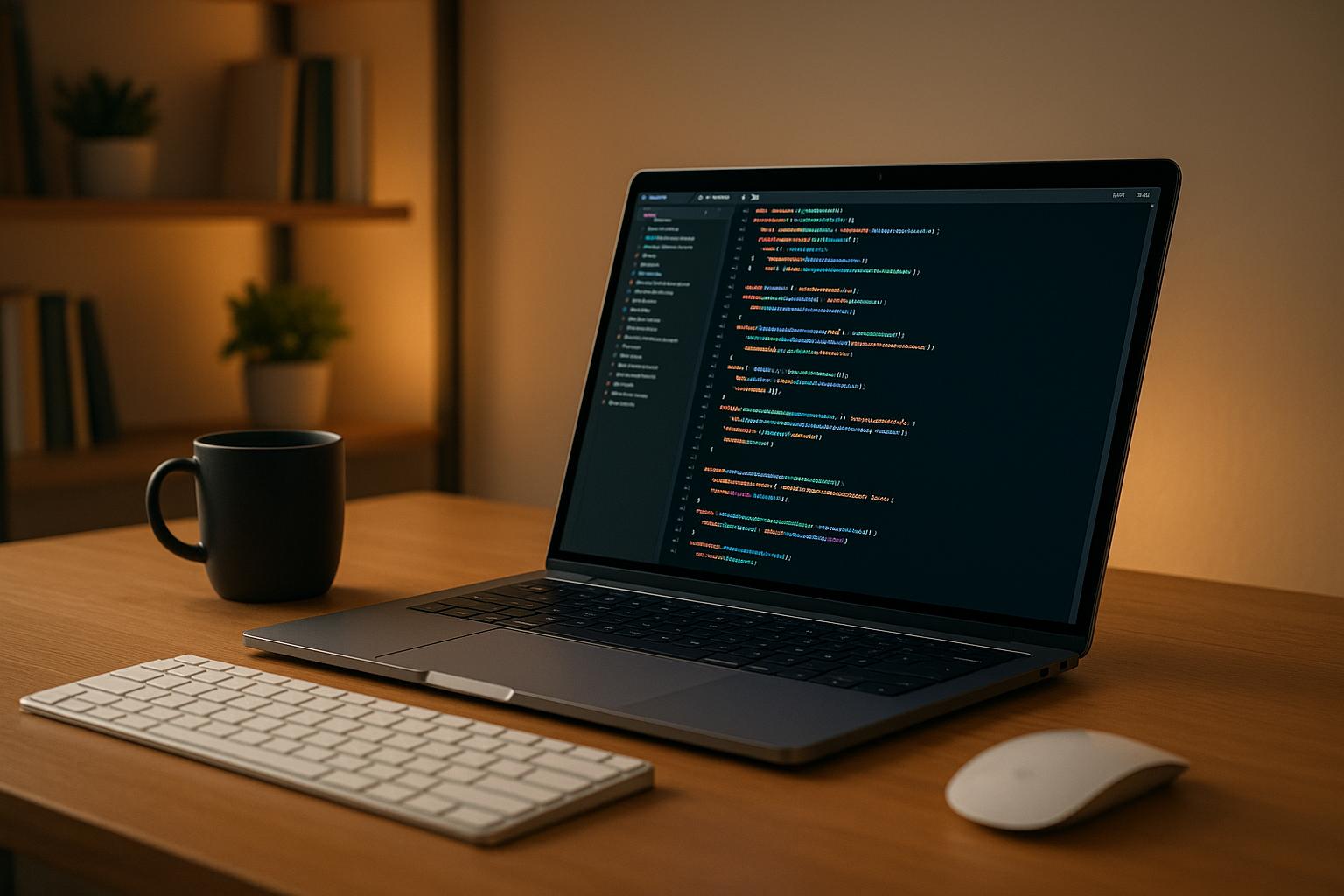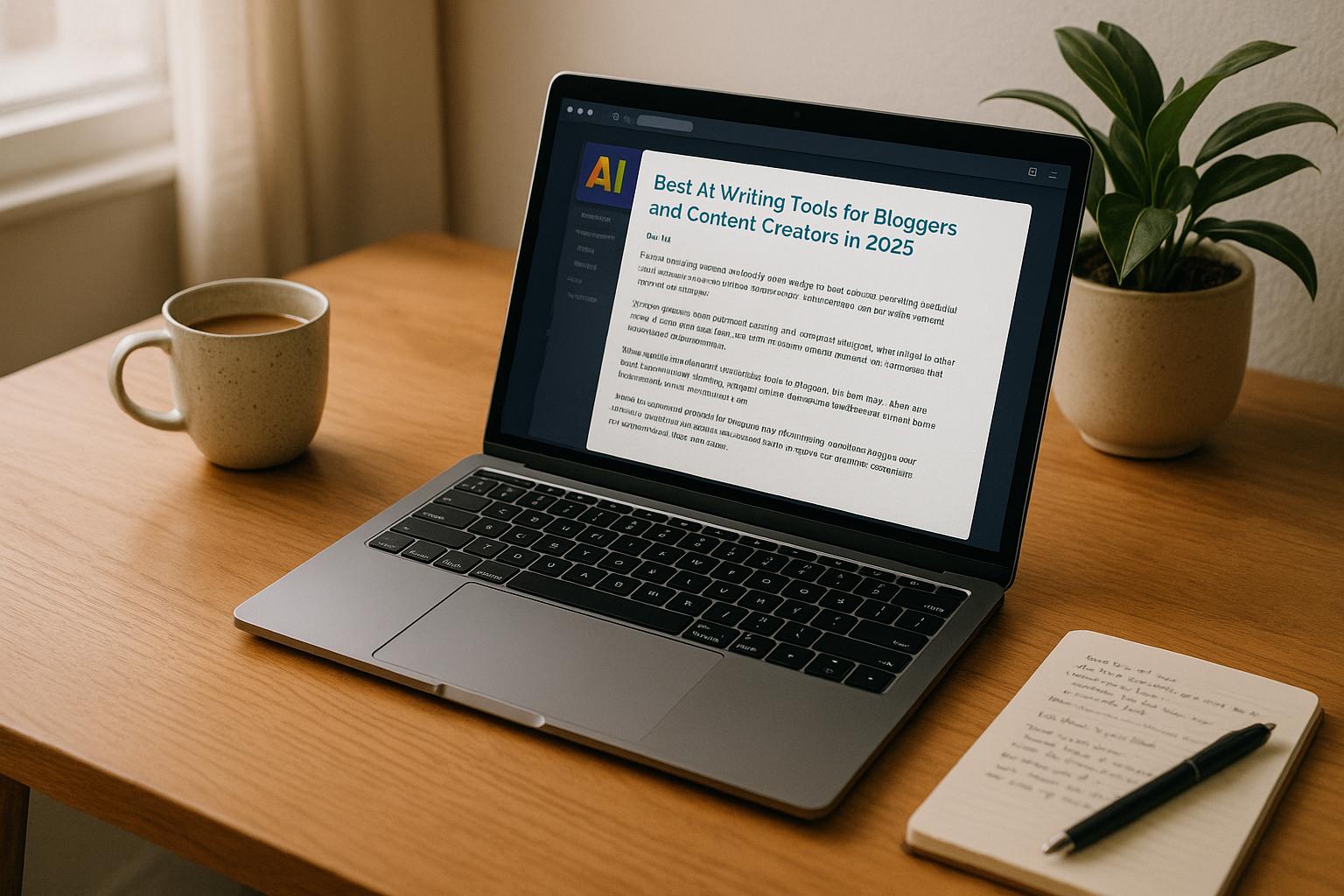AI art generators are tools that transform your text descriptions into images, making art accessible even if you lack design skills. They're popular because they save time, simplify the creative process, and cater to a wide range of users, including students, educators, small business owners, and hobbyists. These tools often feature easy interfaces, preset styles, and free access options, making them ideal for beginners.
Key Points:
- What they do: Turn text prompts into images using AI.
- Why people use them: Quick results, no design skills needed, and versatile applications.
- Who benefits: Students, teachers, entrepreneurs, and anyone exploring visual creativity.
- Features to look for: Simple design, preset templates, free plans, and clear pricing.
Quick Comparison of Popular AI Art Tools:
| Tool | Free Tier | Paid Plans | Key Features | Platform |
|---|---|---|---|---|
| DALL·E 3 | Limited | $20/month (ChatGPT Plus) | Detailed prompts, high-quality images | Web, mobile app |
| Midjourney | None | $10–$60/month | Artistic outputs, Discord-based | Discord bot |
| Adobe Firefly | 25 credits/month | $4.99–$22.99/month | Commercial-safe, Adobe integration | Web, mobile app |
| Stable Diffusion | Yes (self-hosted) | Varies by service | Full control, local processing | Desktop, web |
| Picsart AI | Limited | $7–$10/month | Art + editing tools | Web, mobile app |
| Craiyon | Free | None | Simple, free access | Web |
To get started, pick a platform, create an account, and experiment with text prompts and styles. Use tools like AI Apps to discover and compare options tailored to your needs. Start creating today!
Key Features of Beginner-Friendly AI Art Generators
Simple Design and Easy Navigation
For beginners stepping into the world of AI art, a straightforward and easy-to-use interface is essential. The best beginner-friendly AI art tools focus on keeping things simple, with clean layouts that avoid overwhelming users with complicated menus or unnecessary technical terms. Key functions, like entering a text prompt or hitting the "generate" button, are usually front and center.
These platforms often stick to minimal designs, making navigation a breeze. Instead of cluttering the screen with endless options, they highlight the basics while tucking advanced features into menus that are easy to locate. This way, new users can dive right in without spending hours figuring out how things work.
What’s more, these tools rely on familiar navigation patterns, with clear labels and logical organization. Whether you’re adjusting image settings, checking out past creations, or managing your account, everything feels intuitive. This familiarity helps reduce the learning curve, letting users focus on creating art rather than wrestling with the interface.
On top of that, preset styles make the creative process even more approachable.
Preset Styles and Templates
For beginners, having access to preset styles and templates is a game-changer. These ready-made options take the guesswork out of creating art, offering a solid starting point that’s easy to customize.
Templates are especially handy for specific needs. For instance, a social media template might automatically size images for Instagram, while a presentation template ensures your artwork fits perfectly on a slide. These pre-designed formats help users see how AI art can be applied to practical tasks while delivering polished results right from the start.
Beyond convenience, these presets double as learning tools. By experimenting with different styles and templates, beginners get a feel for various artistic techniques and technical considerations. Over time, this hands-on experience builds confidence, encouraging users to explore more advanced features and create artwork that’s uniquely their own.
Of course, accessibility isn’t just about design - it’s also about cost, and that’s where transparent pricing comes into play.
Free Access and Clear Pricing
For beginners, the ability to experiment without financial pressure is crucial. That’s why many beginner-friendly AI art platforms offer free tiers, giving users a chance to create and learn without committing to a paid plan.
When it comes to premium features, the best platforms keep things simple. Instead of confusing credit systems or hard-to-decipher usage limits, they often use straightforward monthly subscriptions with clear benefits. This transparency makes it easy for users to understand exactly what they’re paying for and how much it will cost.
Additionally, many services allow users to start with a free plan and upgrade as their needs grow. This flexible approach ensures beginners aren’t paying for features they don’t yet need, while still giving them the option to access advanced tools when they’re ready. Clear distinctions between free and paid tiers help users decide when - and if - they want to take the next step, making the entire process less intimidating.
The Ultimate Beginner's Guide to AI Image Generators: Top 5 Tools
Step-by-Step Guide to Getting Started with AI Art Tools
Ready to dive into the world of AI-generated artwork? Follow this step-by-step guide to go from setting up your account to downloading your first masterpiece. Whether you're a beginner or just curious, these instructions will help you get started.
Creating an Account and Logging In
To use most AI art platforms, you'll need to create an account. Even free tiers often require registration, but the process is quick and straightforward.
Finding the Registration Option
Look for buttons labeled "Sign Up", "Register", "Login", or "Get Started" in the top menu bar. These are your entry points to creating an account.
Choosing Your Registration Method
You can usually sign up with your email or use a third-party login like Google. If you go with email, you'll need to provide your address, set a password, and verify your account through an email link (double-check your spam folder if you don't see it). If you choose a third-party login, just follow the prompts to connect the accounts.
Troubleshooting Common Issues
Sometimes, hiccups happen. If you don’t receive a verification email, double-check the email address you entered, try a different provider, clear your browser cache, or switch to incognito mode.
For example, Adobe Firefly requires you to log in with an Adobe ID, or you can create a free account if you don’t already have one. Platforms like SeaArt AI follow a similar process, where you click "Login" and choose between email registration or a third-party account.
Writing Prompts and Selecting Styles
Once your account is set up, it's time to unleash your creativity. This starts with crafting prompts and selecting artistic styles that match your vision.
Understanding Text Prompts
A good prompt is the foundation of any AI-generated artwork. The more detailed and specific your description, the better the result will be. For instance, instead of a vague phrase like "a dog", try something like "a golden retriever sitting in a sunny meadow surrounded by wildflowers." This level of detail helps the AI capture your vision.
Using Style Presets
Most platforms offer style presets to make things easier. Options like "photorealistic", "cartoon", "oil painting", or "digital art" can guide the AI toward a particular aesthetic without requiring you to know complex art terms.
Refining Your Approach
Creating AI art often involves trial and error. Generate an image, see what works, and tweak your prompt or style selection based on the results. Pay attention to which words in your prompt have the most impact on the final image, and adjust accordingly.
Generating, Editing, and Downloading Artwork
Now that your prompt is ready and your style is selected, it’s time to bring your vision to life.
The Generation Process
Hit the "Generate" button and let the AI work its magic. Depending on the platform and the complexity of your request, this process usually takes anywhere from 30 seconds to a few minutes.
Making Adjustments
If the result isn’t quite what you imagined, don’t worry. Many platforms offer editing tools to fine-tune your artwork. You can adjust aspects like style intensity, aspect ratio, color, and lighting. Some tools, like OpenArt, even include advanced features like InPainting or object removal for precise edits.
"If you're not 100% happy with your AI generated image, you can use our advanced yet easy AI image editing tools to refine the image to exactly you want it to be."
Saving Your Creation
When you’re satisfied, download your artwork using the "Download" or "Export" button. Some platforms also let you copy the image to your clipboard or share it directly to social media. For example, Adobe Firefly allows users to download their images, copy them, or share them directly from the platform. Keep in mind that downloaded images from Adobe Firefly include a small label indicating they were created with the tool.
If you plan to edit your artwork later using professional software, opt for higher-quality formats during the download process. This ensures you have the flexibility you need for future adjustments.
sbb-itb-212c9ea
Comparison of Beginner-Friendly AI Art Generators
Choosing the right AI art generator can feel overwhelming, especially for beginners. Each tool comes with its own strengths, pricing models, and ease of use, making it crucial to understand what sets them apart.
Overview of Popular Tools
Several AI art platforms stand out as excellent options for beginners. DALL·E 3, available directly through ChatGPT, excels at understanding detailed prompts, making it a great choice for users who prefer conversational interactions with their AI tool. Midjourney, on the other hand, generates visually stunning artistic images with minimal input, though it operates exclusively through Discord rather than a traditional web interface.
Adobe Firefly offers a unique advantage by focusing on commercially safe training data and seamless integration with Adobe's creative suite, which is particularly appealing for professionals. Stable Diffusion allows for extensive customization and can be run locally, giving users full control over the process.
For those seeking a mobile-friendly solution, Picsart AI combines art generation with powerful editing tools, creating an all-in-one creative experience. Meanwhile, Craiyon (formerly DALL·E mini) provides completely free access, making it an ideal choice for casual experimentation without financial commitment.
To make an informed decision, it’s important to weigh each tool’s features, pricing, and accessibility.
Features, Pricing, and Accessibility
Here’s a breakdown of the costs, features, and platforms for these tools:
| Tool | Free Tier | Paid Plans | Key Features | Platform |
|---|---|---|---|---|
| DALL·E 3 | Limited access through ChatGPT | $20/month (ChatGPT Plus) | Natural language processing, high-quality outputs | Web, mobile app |
| Midjourney | None | $10–$60/month | Artistic image generation, active community | Discord bot |
| Adobe Firefly | 25 credits/month | $4.99–$22.99/month | Commercial safety, Adobe integration | Web, mobile app |
| Stable Diffusion | Yes (self-hosted) | Varies by service | Complete customization, local processing | Desktop, web services |
| Picsart AI | Limited features | $7–$10/month | Integrated editing tools and templates | Web, mobile app |
| Craiyon | Free (ad-supported) | None | Simple and accessible interface | Web |
While some tools, like Stable Diffusion, offer free self-hosted options, others, such as Adobe Firefly and Midjourney, use subscription-based pricing. Each tool’s payment model reflects its target audience and feature set, from credit systems to unlimited generation plans.
Pros and Cons of Each Tool
Delving deeper into their strengths and limitations can help you pick the right tool for your needs.
DALL·E 3 stands out for its ability to create photorealistic images based on detailed prompts. Its integration with ChatGPT makes it extremely user-friendly. However, the $20/month ChatGPT Plus subscription might be a hurdle for casual users, especially with limitations on the number of generations.
Midjourney is celebrated for its consistently artistic outputs and the vibrant Discord community that supports creativity and collaboration. That said, its reliance on Discord as the sole interface can feel unintuitive for some, and the absence of a free tier may deter beginners.
Adobe Firefly prioritizes commercial use, offering peace of mind with its licensed training data. Its integration with Adobe’s suite is a big plus for professionals. However, the credit-based system can feel restrictive for users who want to experiment freely.
Stable Diffusion is the go-to for those seeking control and flexibility. It’s perfect for users willing to navigate a steeper learning curve and set up a local environment. However, this hands-on approach might be daunting for beginners unfamiliar with such setups.
Picsart AI shines as a mobile-friendly, all-in-one tool that combines art generation with advanced editing features. While the mobile app is great for creativity on the go, its image generation quality may not match the precision of more specialized tools, and the interface can feel overwhelming due to its wide range of features.
Craiyon offers free, ad-supported access, making it an excellent entry point for anyone looking to explore AI art without spending a dime. However, its image quality is generally lower compared to premium alternatives.
Each tool has its niche: Adobe Firefly and DALL·E 3 are beginner-friendly, Midjourney appeals to Discord enthusiasts, and Stable Diffusion offers unmatched control for tech-savvy users. For casual experimentation, Craiyon provides an easy and cost-free starting point.
Finding AI Art Generators with AI Apps

Finding the perfect AI art generator can feel overwhelming, especially if you're just starting out. That’s where AI Apps steps in - a centralized platform designed to simplify your search for beginner-friendly AI art tools. It streamlines the process, making it easier to find tools that align with your needs. Let’s dive into how AI Apps can help.
What Is AI Apps?
AI Apps is a carefully curated directory that features over 1,000 AI tools across various categories, including a dedicated section for AI art generators. Think of it as your go-to resource for discovering, comparing, and selecting the right tool.
But it’s more than just a list. AI Apps employs a multi-step verification process to ensure the tools listed are reliable and functional. Whether you’re looking for free tools or premium options, the platform organizes everything in one convenient place.
What makes AI Apps stand out is its focus on quality over quantity. Instead of bombarding you with every tool available, it highlights trusted favorites and promising newcomers. This thoughtful approach helps you stay up-to-date in the ever-changing world of AI art without feeling overwhelmed.
How to Use AI Apps for Tool Discovery
AI Apps makes it easy to find the right tool with its intuitive filters and sorting options. You can search by category, subcategory, or pricing - perfect for beginners who want to try free tools before committing to paid versions.
Start by heading to the AI Art Generators section, where tools are grouped by their main features. From there, you can use filters to narrow your search, such as focusing on free options or sorting by trending tools within the AI art community.
The platform also highlights newly launched tools, giving you a chance to explore cutting-edge options that might offer exciting features or competitive pricing. Each listing provides a detailed overview, including key features, pricing, and accessibility, saving you the hassle of jumping between multiple websites for comparisons.
Benefits of Using AI Apps for Beginners
For those new to AI art, AI Apps removes much of the guesswork. Instead of navigating through confusing jargon or endless feature lists, you get clear, organized information to help you make confident decisions.
The platform’s quality verification process is especially helpful for beginners. It ensures that every tool listed meets specific standards, so you’re less likely to encounter unreliable or disappointing options. If you’re on a budget, the pricing filters make it easy to spot free or affordable tools.
AI Apps also acts as a discovery engine, introducing you to tools you might not have found otherwise. Even if you’re familiar with popular options, the platform can uncover hidden gems that align perfectly with your creative goals.
Best of all, AI Apps provides a pressure-free environment. You can explore, compare, and research tools at your own pace without being bombarded by aggressive sales tactics or flashy ads. This neutral approach ensures you focus on finding the best fit for your needs without unnecessary distractions.
Conclusion
AI art generation has transformed from being a technical challenge to something anyone can access with ease. These tools demonstrate that you don't need coding skills or formal art training to produce impressive digital artwork.
Key Takeaways
User-friendly features have removed traditional barriers, making creativity the main focus. With simple navigation and ready-made templates, you don't have to wrestle with complicated settings - just let your imagination flow.
Free access options are a great way to start. Many platforms offer generous free tiers, allowing you to experiment without spending a dime. This lets you explore your preferences and get a feel for the tools before deciding to invest in premium features. Plus, step-by-step guides make the entire process straightforward.
AI Apps simplifies finding the right tool. With a collection of over 1,000 curated tools, it takes the guesswork out of the equation. Its advanced filtering system - by category, pricing, and features - helps you quickly zero in on what suits your needs, saving time and effort.
With these insights, you're ready to dive in and start creating.
Next Steps
Ready to take the plunge? Start experimenting today. Choose one of the beginner-friendly tools mentioned earlier and create your first piece of AI art. Start small with simple prompts like "a serene beach at sunrise" or "a dog dressed as a superhero" to get a feel for how it works.
Expand your toolkit with AI Apps as you grow more confident. Its discovery features can help you explore tools tailored to your evolving interests and skill level. Whether you're looking to try new art styles, find specific features, or stick to a budget, AI Apps makes the search process a breeze.
Don’t forget about the supportive AI art community. They’re always sharing tips, tricks, and inspiration. Your first creations might not be masterpieces, but they’ll serve as stepping stones to finding your unique artistic style in this exciting digital space.
AI art is evolving quickly, with new tools and features emerging all the time. By starting now and using resources like AI Apps to stay updated, you'll not only build your skills but also position yourself to take full advantage of future developments in this creative frontier.
FAQs
What’s the difference between free and paid AI art generator plans?
The main differences between free and paid AI art generator plans revolve around usage limits, image quality, processing speed, and available features. Free plans often come with restrictions like a limited number of image generations per month, lower-resolution outputs, and fewer options for customization.
With paid plans, you gain access to higher-resolution images, faster processing speeds, and extra features such as advanced editing tools or even unlimited usage. Subscription costs for these plans typically range from $7 to $29 per month, making them a better choice for users who need frequent access or higher-quality results.
What’s the best way for beginners to use text prompts with AI art generators?
Beginners aiming for the best outcomes should focus on crafting clear and detailed prompts. Adding descriptive elements like colors, textures, or artistic styles can guide the AI more effectively. Using three to six carefully chosen keywords also helps the AI better grasp your vision.
To enhance results further, try structuring your prompts around key components: the persona (e.g., "a futuristic robot"), the task (e.g., "painting a sunset"), and the context (e.g., "in a surreal, dreamlike style"). Playing around with different combinations of these elements can help you fine-tune your prompts and consistently achieve the results you’re looking for.
What challenges do beginners face with AI art generators, and how can they solve them?
Beginners often face challenges like generating realistic features - hands, for example - or capturing intricate details. A helpful solution is to use reference images and craft specific, detailed prompts to guide the AI in a more precise direction.
Another hurdle is striking the right balance between your creative input and the AI's capabilities. To improve, try experimenting with different prompts, practice consistently, and connect with online communities. These groups can offer valuable tips and insights, helping you better understand the tool’s strengths and limitations.
Remember, progress takes time. Start with small projects, explore the AI's features step by step, and embrace the learning process through trial and error!



